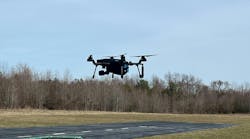At a recent training conference, we were discussing new recruits and their idiosyncrasies. Most of the attendees were training managers at various academies throughout the state. The conversation began with the texting and gaming mentality. Many of the new trainees have "done" things virtually, but really weren't experienced at all. Others had a "game cheat" mentality where this generation didn't think anything of shortcutting, bypassing or otherwise getting around the conventional way of completing tasks.
I monitored the conversation around the huge luncheon table. My ears perked up a bit when the conversation got around to the "21 foot rule," Three of the instructors related the same series of incidents from two different academies. The students were placed into a force decision-making scenario and they mentally paced off 21 feet before proceeding. The after-action report from the exercise often included, "well I figured that 21 feet was about where the table was. I waited until the suspect got within 21 feet before I shot him."
As trainers, when these things surface it is important they are addressed during training, lest the training habits surface in real life. The most inexpensive training tools in the business can be used to put our trainees, and in-service officers, under the proper amount of stress to create mental acuity and muscle memory. These tools are drones, imitations of the real thing. Sometimes drones hurt in training. This is also a good thing.
A drone is a replica of the real object used to simulate the size, weight, deployment and use of the real thing. They are usually called training aids but old-time martial artists used to use "drones" when they had a real knife with the edge ground off. There are also furniture drones, like the products from Dummies Unlimited Inc. to Benchmade's 520T training knife.
To a Baby Boomer's eyes, the Millennial Student is decision-challenged, sheltered, socially inept and ethically bankrupt. For example, the new generation of trainee can tell you they "know" someone, having never met them in person. They are capable of dating without ever holding a conversation, save texting their BFF in the next booth in a restaurant.
But as trainers, we must capitalize on their strengths, not dwell on their shortcomings. I first discovered this when I had a training mission for several companies of co-ed soldiers. I was a small arms instructor and our unit needed to get about 500 soldiers through a rifle marksmanship program in about three days. We had a serious strategy planning session. All our instructors had at least 10 years in the small arms business and several on our team had Vietnam time.
For the record: The soldiers we sent to Iraq and Afghanistan surprised everyone with their strong will and resourcefulness. Where did they practice resourcefulness? RPGs. Not the rocket launchers, but the role-playing games. When I walked up to a group of teen soldiers, I asked them if they had received deployment orders. They had, and several admitted they had volunteered for that very purpose. It didn't take long for me to realize that our country was being represented by some of the most professional soldiering in its history.
The tank gunnery training team was in the next barracks over from us, the Small Arms Training Team. They were making similar observations. Their gunners could acquire and fire on their targets in record time, the best gunners being gamers. However, the drivers had to be reminded to pay attention to what was in their periphery. In fact, the 5-ton drivers had trouble with anything outside of the windscreen — forget about backing up or looking for the rearview mirror. Our M16 shooters were outstanding, but when we put them on the pop up range, they missed targets that weren't directly in front of them.
When we taught them how to adjust their sights, none of them did it correctly. What good is it to tell them to turn something clockwise? This generation has hardly seen an analog clock or watch.
We quickly discovered that, for many of this generation, what goes on online is important to them. We began recording our observations and applying them. Our training plan had to work efficiently if we were going to continue mission.
These younger folks long for social networking. They want to build teams. Make everything a team effort, including driver/co-driver and shooter/observer. When we taught them anything, we used drones. We put something in their hands and put them under stress, then added the social factor. For the Millennial, drones and teamwork is the best work.
We quickly recognized how the Millennials have learned to learn. When old folks like me were tasked to learn something, we practiced and practiced it correctly, shrugging off the agony of defeat. We learned how to do individual tasks correctly before assembling the consolidated task as a whole. Often, we would lock ourselves into our rooms or practice at the skating rink when no one else was around, exiting only when the skill level exceeded the embarrassing stage.
The new learners have trained on games ranging from Super Mario to Halo 3. Video games are executed in a particular sequence until the gamer reaches a level or task which they cannot accomplish at the time. They re-spawn or are resurrected in order to continue play. How do they learn? By failing. The learning paradigm is different. For the new generation, failing is an essential part of learning. Not only that, Millennials "practice" failing publicly, either with their virtual public or their f2f (face-to-face) contemporaries. For this generation, failing in front of a peer is not an embarrassment; it is a badge of honor. After all, spawning has taken away the finality of death or failure.
Now, back to the "21 foot rule." First, the recruit has to understand that the variable is not the distance, it is the threat. Therefore, they must first be able to read what the subject is doing, not what piece of real estate they are occupying. Give the role player a drone appropriate for the scenario and make the officer react to the situation. Change the distance and the cover and the layout of the scene. Ask them why they responded that way in the AAR. No recruit observing the AAR should be allowed to be there without entering a comment. When the role player/trainer could potentially injure the new recruit in "real life" they should poke them a bit in training. I am not going to get into a labor debate here; to a Millennial, training mistakes should literally hurt or no training value has been transmitted.
A recruit needs to swing a baton drone with full force at a role player in a fully padded suit, just to get a taste of what it's like to have a baton strike that is completely ineffective. The knife drone hidden in the suit should be appropriately fed to the recruit.
Using drones is the best training for active shooter scenarios. The recruit should know that sweeping a couple of hallways in one building is only one fraction of what he or she needs to clear. In training, their calves and shoulders should ache the next day. Use shotgun and handgun drones and real ballistic shields. Role players should have moulage (injury-simulating) kits.
Capitalize on their communication skills. Successful Halo players can talk their teammates into negotiating difficult mazes "under fire." In an active shooter or homicide in progress scenario, use a training channel and communications team.
Is there a place for the "game cheat" mentality in all this? In fact, there is. The new recruits will be the first ones to discover an effective template for a particular type of call. It is a one-size-fits-most solution, but it is often effective. For example, several students were repeatedly writing the same report narrative format for a certain type of call. They discovered they could store a "DUI arrest" or "DV format" report on a thumb drive and plug it in when they needed it.
Training should incorporate multi echelon principles. If the individual recruit is training on clearing a mass casualty, the administration should be rolling out for Incident Command training while support staff is visibly active at the scene. Multi echelon training serves a whole new purpose for new recruits. They need to clearly be exposed to the magnitude of the incident.
The new Millennial recruit has his shortcomings, and training this recruit can be frustrating to the experienced officer. However, recognizing his strengths and making drones hurt can go a long way toward advancing the profession.
Lindsey Bertomen is a retired police officer who teaches at Hartnell College in Salinas, Calif.



